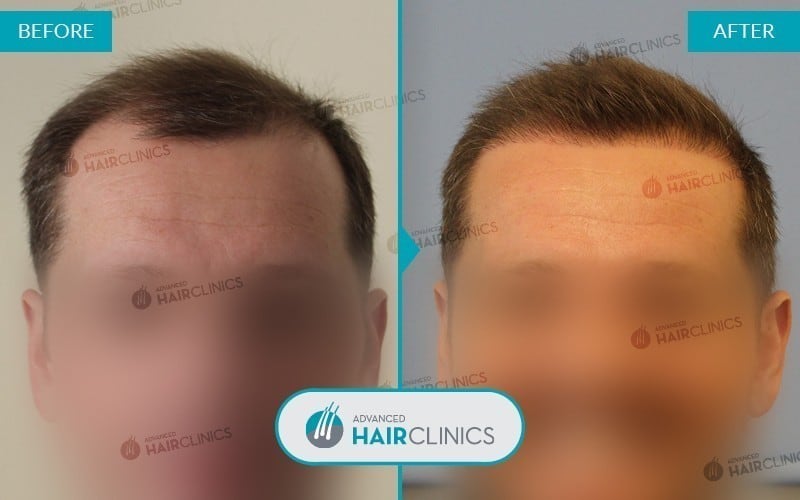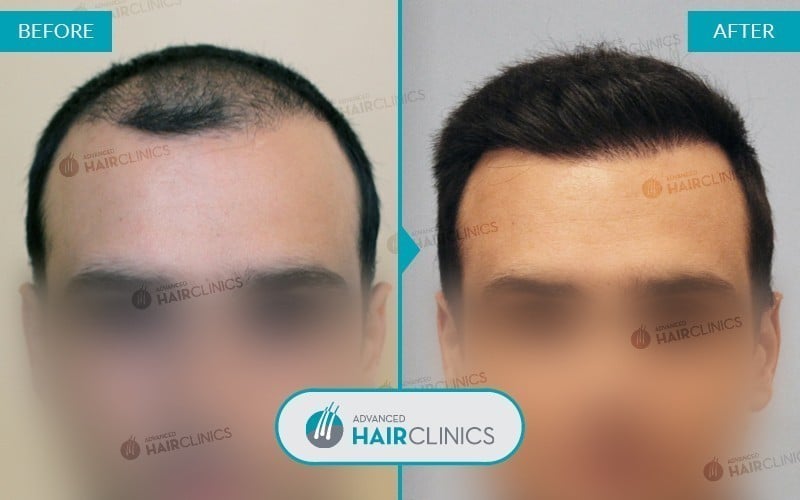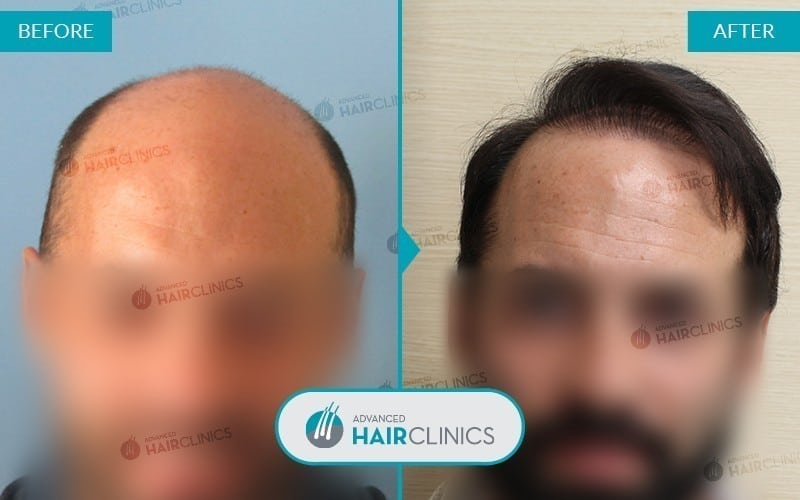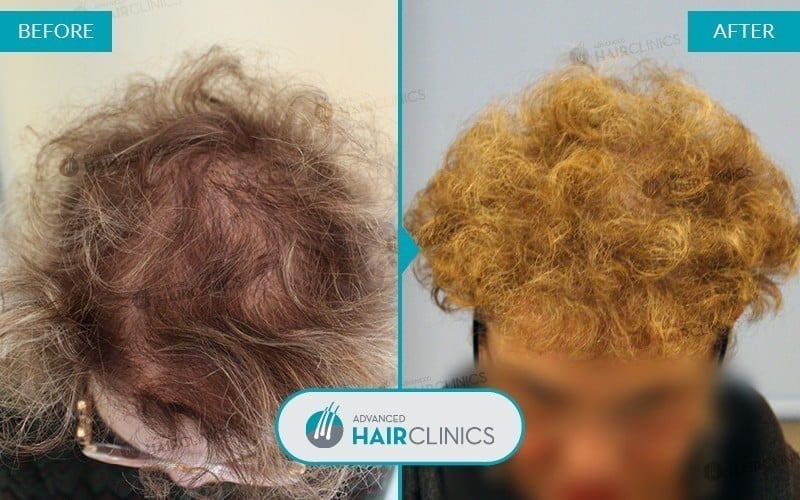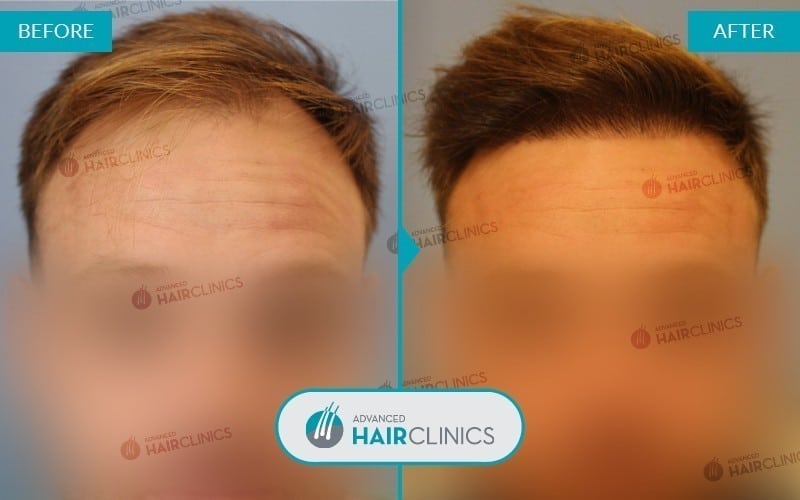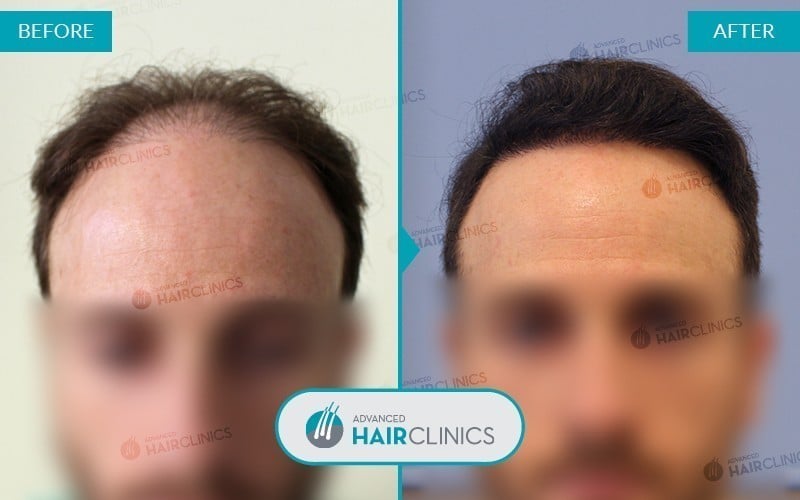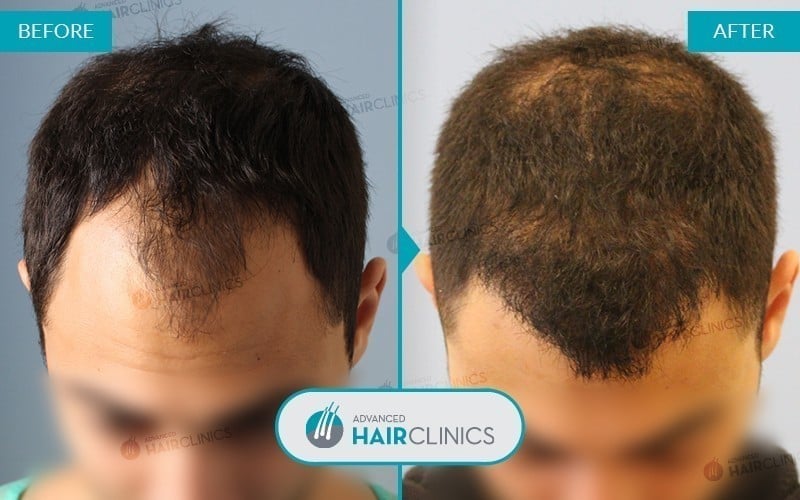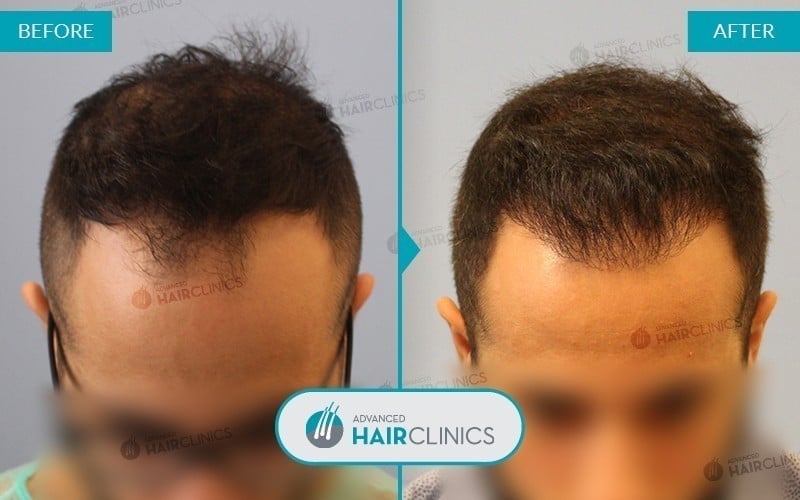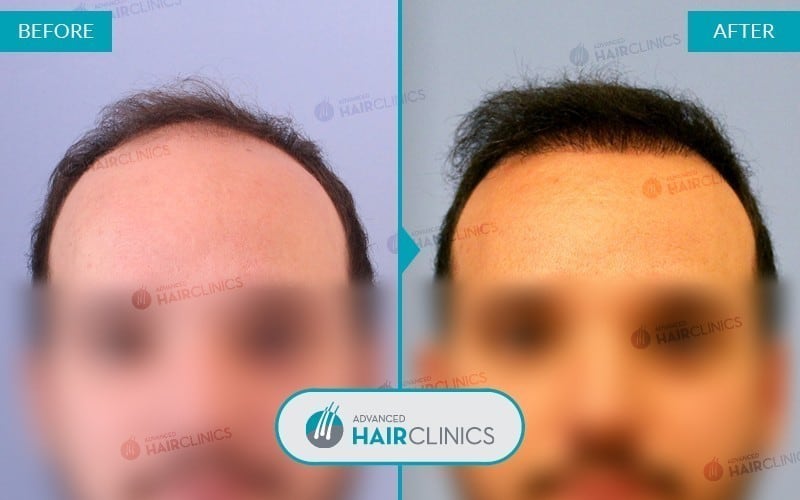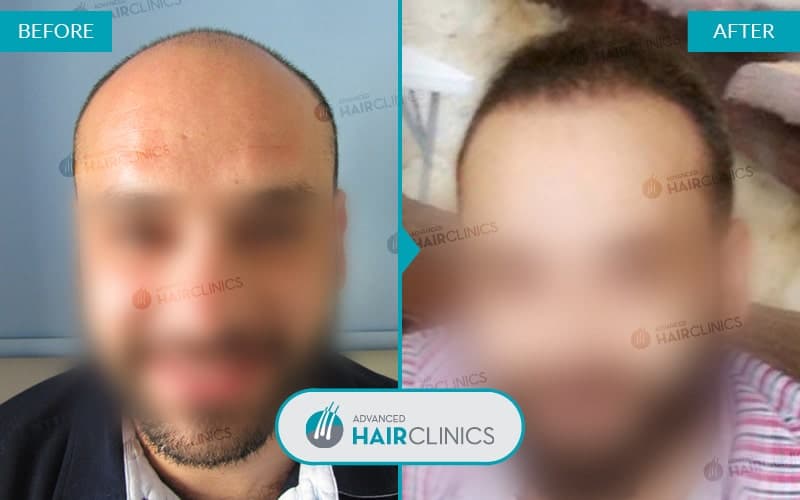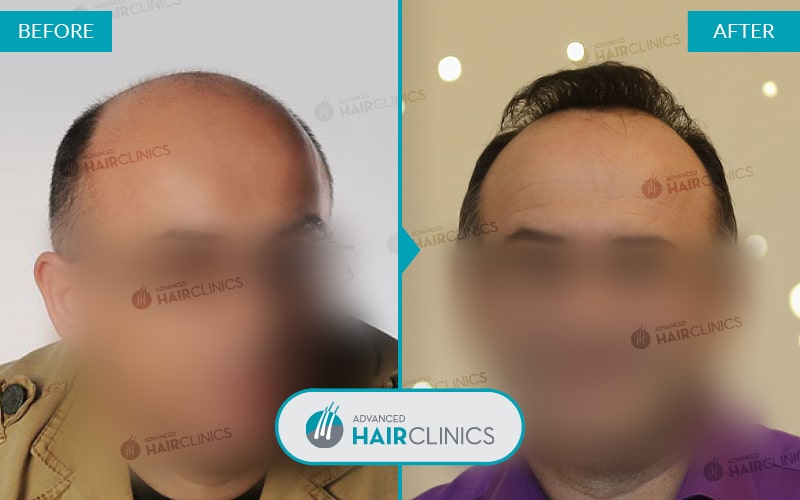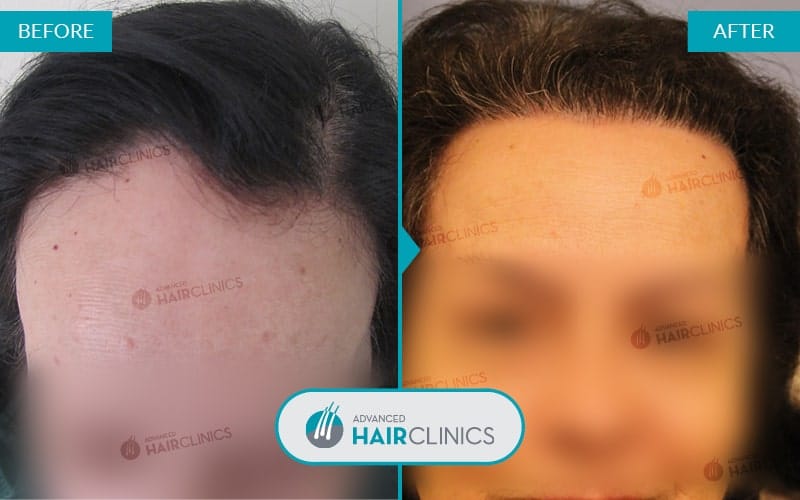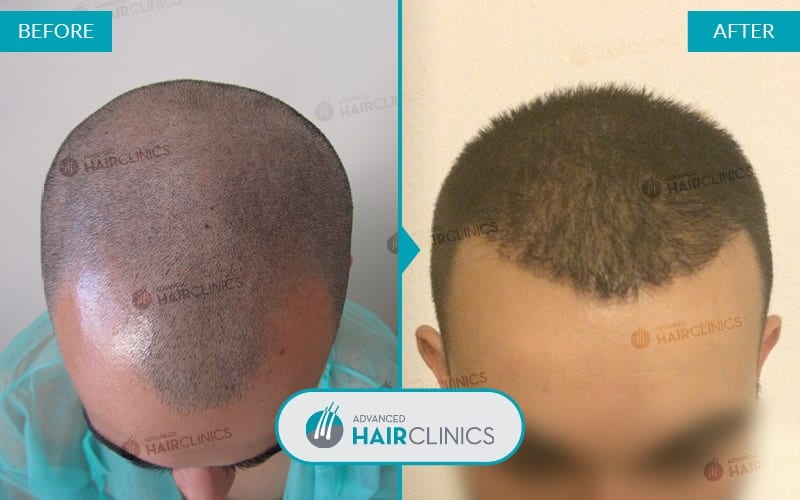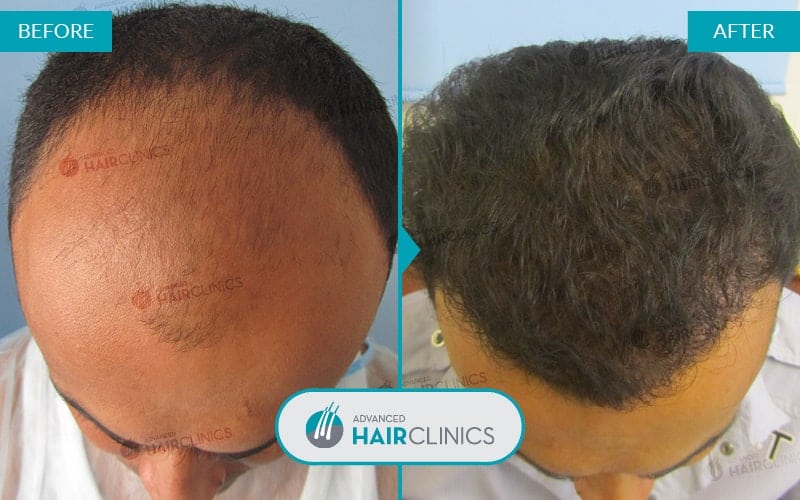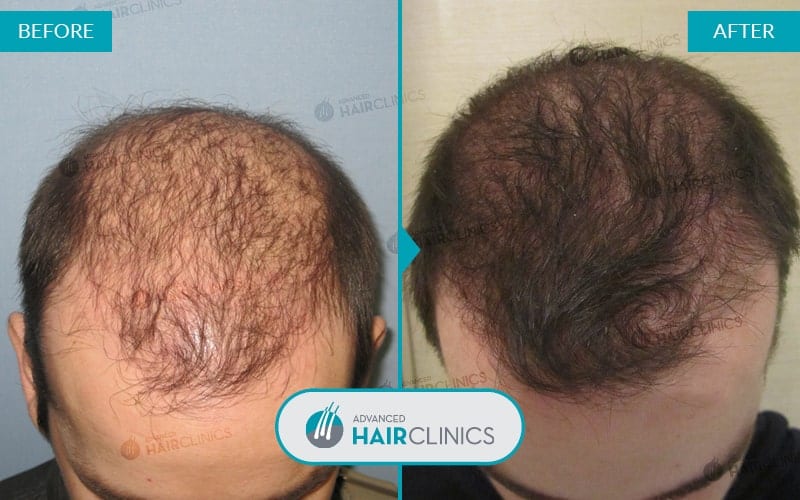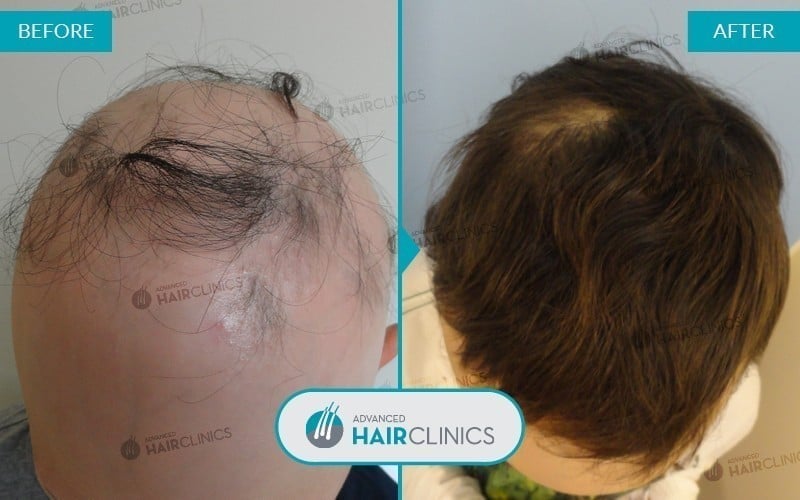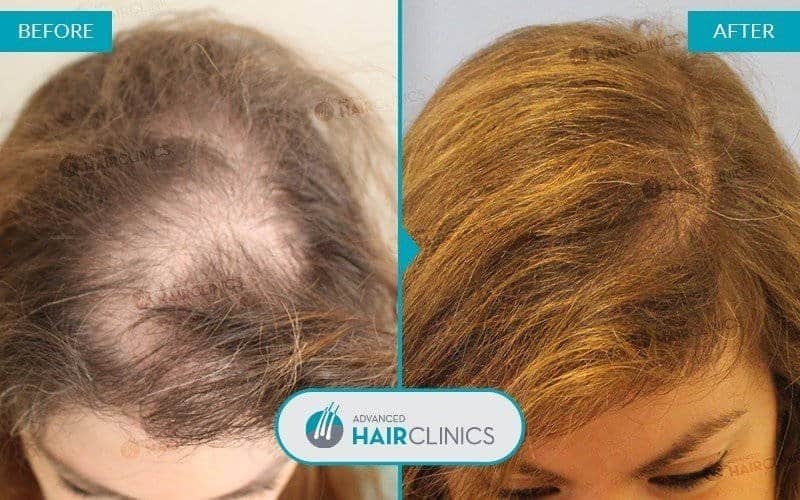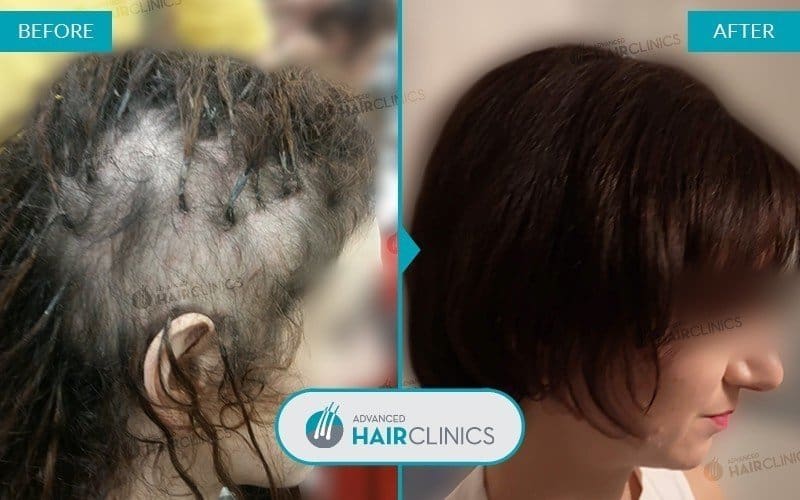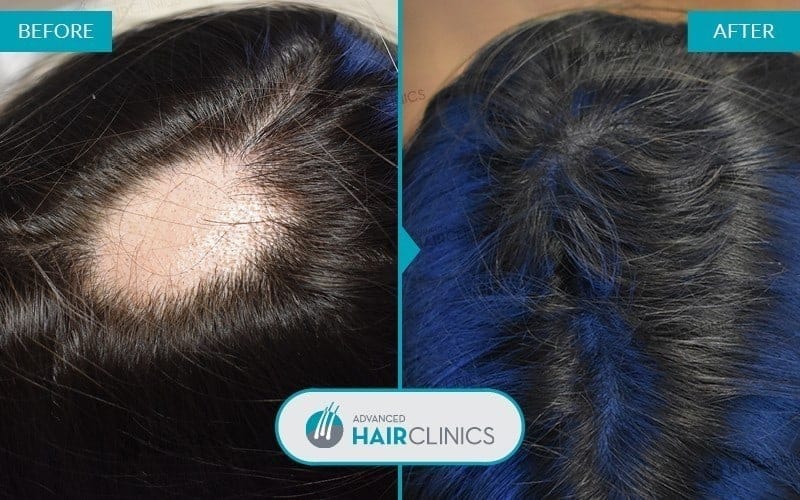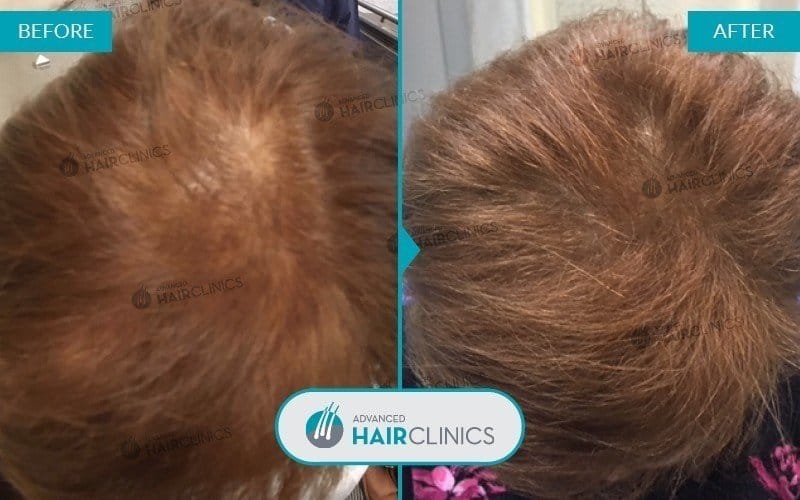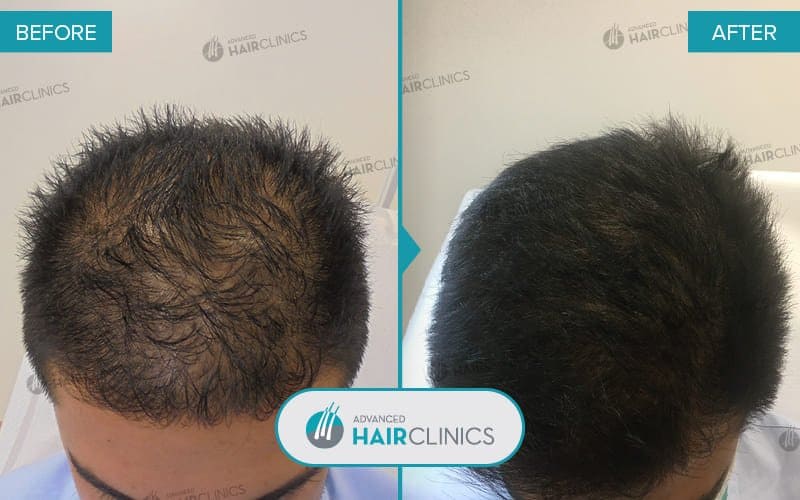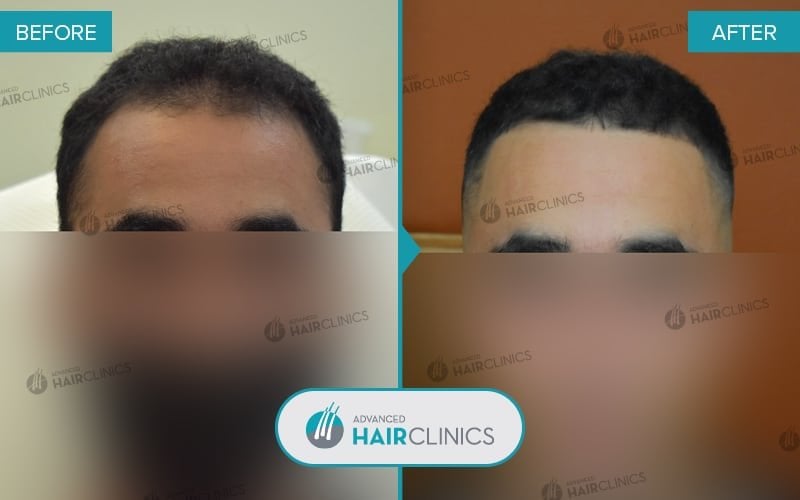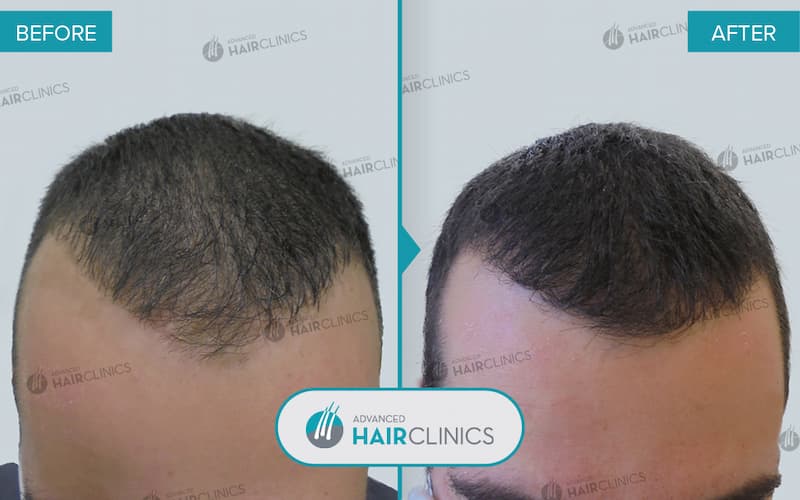In the case of old lesions of relatively small size, which have remained quite stable or have a very slow development, a test session with FUE hair transplant is suggested, during which a few dozens of follicles are implanted in a specific part of the affected area, and pictures are taken. During the months after the hair transplant session, the patient is re-examined in order to assess the growth of the new hairs and to establish if there has been any reactivation or expansion of the lichen planus patch. If the hair growth is satisfactory and there is no picture of expansion of the follicular lichen, a normal hair transplantation session with FUE method can be performed in order to cover as much of the affected area as possible.
Cicatricial Alopecia
This condition is due to the destruction of the hair follicle -by various causes- and its replacement with scar tissue, leading to permanent hair loss.
Scarring alopecia occurs in men and women of all ages who are otherwise healthy. In some cases of scarring alopecia, hair loss is gradual and symptomless and goes unnoticed. In other cases, scarring alopecia is accompanied by itching, burning and pain and progresses rapidly.
In scarring alopecia, the inflammation that destroys the follicles is under the skin and the scar is not visible. The affected skin in scarring alopecia is usually red, scaling, hyperpigmentation or hypochromia.

Treatments options
Conservative treatments
The choice of treatment due to follicular lichen is hydroxychloroquine, which has very good results in the stabilisation of the damages. Other medications used for this form of cicatricial alopecia are topical and systemic steroids, calcineurin inhibitors and in advanced cases, azathioprine.
Discoid lupus erythematosus (DLE) is treated with hydroxychloroquine, topical and systemic steroids, minoxidil and immunosuppressive drugs.

Hair Transplant
Hair transplantation can be used to treat some forms of cicatricial alopecia. At Advanced Hair Clinics, the hair transplantation teams under the supervision of the plastic surgeon Dr. Anastasios Vekris perform hair transplantation with the FUE method to cicatricial alopecias that are due to injuries or burns. A particular category of traumatic cicatricial alopecia which is often treated with hair transplantation, are traumatic scars after hair transplantation with the FUT or Strip method. In these cases, hair follicles are taken from the donor area on the scalp or other areas, such as the face or chest, and placed over the scar, with the objective to cover the scar in a natural looking way.
In small and stable patches of cicatricial alopecia due to lichen planus or discoid lupus erythematosus, transplantation can be successful and has been applied in our clinic in several cases with very good results. In this case, the first step is to set a secure diagnose of the cicatricial alopecia, i.e. to ascertain that it is due to follicular lichen and to exclude the possibility of alopecia areata. Next, the history of the damage is analysed and a conservative treatment is administered.

RESULTS
Hair loss treatments & Hair transplantation
CICATRICIAL ALOPECIA
Diagnose & Types
The diagnosis of scarring alopecia is made by clinical examination in combination with a phototrichosogram. Depending on the picture that the examination shows, the disease is classified into two main types.
Primary
In which the cause is endogenous, usually an inflammation that targets and destroys the hair follicle. The most common form of primary cicatricial alopecia are lichen planus (follicular lichen) and discoid lupus.
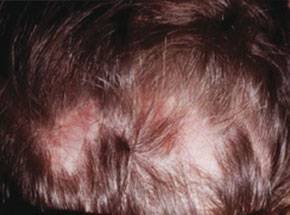
Secondary
In this type of alopecia, the cause is exogenous e.g. trauma, inflammation, injury, burn, traction or neoplasia.
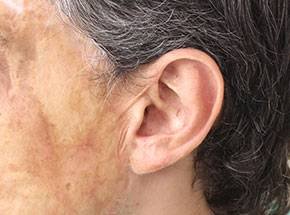
Based on the causes, cicatricial alopecia is classified in:
- Developmental disorders and inherited diseases
(skin aplasia, nevus, porokeratosis, ichthyosis, Darier’s disease) - Natural causes
(wounds, burns, radiation dermatitis) - Microbial inflammations
(dermatophytes, bacterial infections, leprosy, syphilis, bursitis, acne, viral infections, shingles)
- Neoplasms
(basal cell carcinoma, squamous cell carcinoma, metastatic carcinomas) - Skin diseases of unknown origin
(smooth lichen, lupus erythematosus, localised scleroderma, sarcoidosis, follicular mucinosis)
